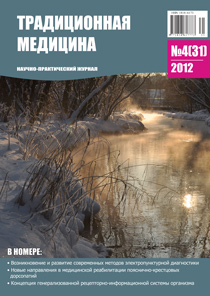Lepidium meyenii Walpers (maca peruvian): the contribution of science in optimum nutrition
Keywords:
Lepidium meyenii Walpers, Lepidium meyenii Walpers, maca, roots, nutritious food, adaptogenic and aphrodisiac medicines, phytotherapyAbstract
As a result of studies it is proved that the inhabitants of the age group from 40 to 75 years who in Carhuamayo the roots of maca (Lepidium meyenii Walpers), do not have the reduction of the integral indicator of health, estimated by means of the adapted questionnaire, while the residents of the same zones, which do not use a maca, there is a reduction of this indicator. It was determined that the red maca contributes to the reduction of osteoporosis and benign hyperplasia of the prostate, while the black maca increases the number of sperm, improves memory and learning, slow down the symptoms of fatigue.References
1. Cobo B. History of the new world (1653). Biblioteca de autores espanoles. – 1956: 430 pp.<BR>2. Gonzales G.F. Maca: Del alimento perdido de los Incas al. milagro de los Andes: Estudio de seguridad alimentaria y nutricional // Seguranca Alimentar e Nutricional, Campinas. 2010. – Vol. 16–17. – No. 1. – P. 16–36.<BR>3. Gonzales G.F. Ethnobiology and ethnopharmacology of Lepidium meyenii (Maca), a Plant from the Peruvian highlands. Evidence-Based Complementary and Alternative Medicine. 2012; ID 193496, 10 pages.<BR>4. Gonzales-Castaneda C., Gonzales G.F. Hypocotyls of Lepidium meyenii (maca), a plant of the Peruvian highlands, prevents the ultraviolet A, B and C (UVA, UV B and UV C)-induced skin damage in rats // Photodermatology, Photoimmunology and Photomedicine. 2008. – Vol. 24. – P. 24–31.<BR>5. Gonzales-Castaneda C., Rivera V., Chirinos A.L., Evelson P., Gonzales G.F. // Int. J. Dermatol. 2011. – Vol. 50. – No. 8. – P. 928–38.<BR>
Downloads
Published
2012-12-30
How to Cite
Гонзалес, Ф. Г., К. Гонзалес, С. Гонзалес-Кастаньеда, and М. Гаско. “Lepidium Meyenii Walpers (maca peruvian): The Contribution of Science in Optimum Nutrition”. Traditional Medicine, no. 4(31) 2012, Dec. 2012, pp. 46-48, http://www.tradmed.ru/index.php/tm/article/view/329.
Issue
Section
Naturopathy
License
Reproduction of any materials without the written permission of the publisher is prohibited.
The responsibility for the accuracy of the information contained in articles and advertisements are the authors and advertisers.


